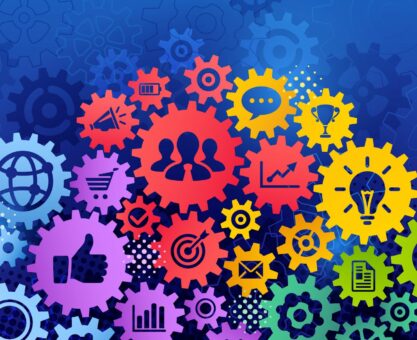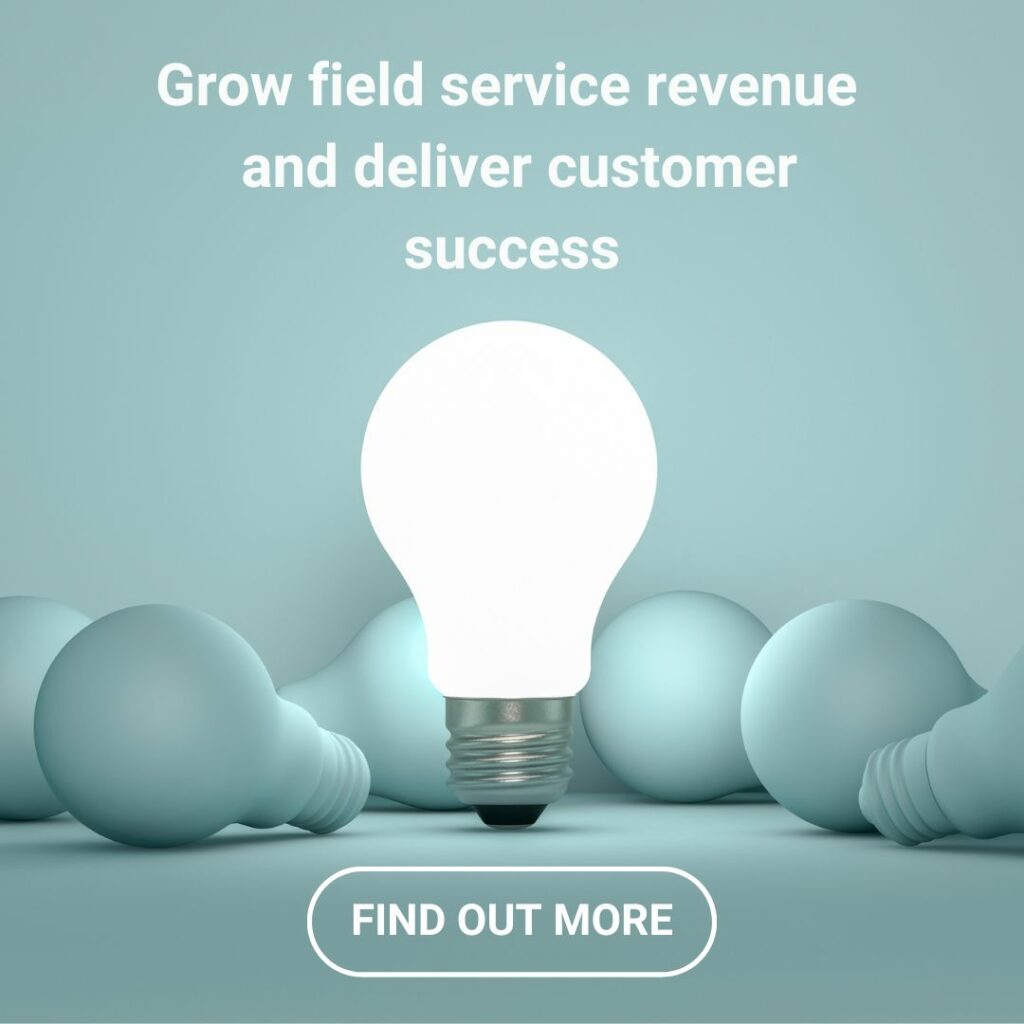Sam Klaidman, Founder and Principal Adviser at Middlesex Consulting, analyses the five global trends that will drive the future of field service…
In the science of dynamics speed is defined as the rate of displacement of a moving object over time (d/t). Acceleration is defined as the rate of change of speed over time (d/t2). And then comes jerk – the rate of change of acceleration over time (d/t3).
Why, you ask, do we care? Because until March 2020, we have been experiencing a period in which the rate of change of our “world” has been steadily accelerating. And then COVID-19 came along and changes that were projected to take years to accomplish were somehow accomplished in weeks or months. Mentally we felt as though the car we were riding in suddenly crashed into a bridge support and we were thrown into an airbag. We experienced jerk!
When we operate in a period of acceleration, we have time to prepare our self and our team to adapt to new operating conditions. It is still hard for many people to adapt as quickly as the change occurs, but they still have warning and can frequently participate in designing the new “world.” Unfortunately, the side effect of jerk is that changes suddenly appear and people must adapt without having the time to figure out how they will be affected. They don’t get a clear answer to the age-old question WIIFM (what’s in it for me?).
Since the world of Field Service depends on people, our own, our partners, and our customers, we must be sensitive to how our new operating procedures will impact them and effect their personnel and professional lives. We must consider all these people as we specify, design, implement, test, and go-live with sub-projects that will come together to create the new world that is rushing towards us.
The five trends driving the future of field service
First a word of warning! On the morning of January 2, 2021, I read this in a Bloomberg News daily mailing:
Last year taught us that sweeping forecasts are pretty much a waste of time. Amid a raging virus, a global recession and a rapid markets turnaround, no one could have guessed that a record $120 trillion of stock would change hands on U.S. exchanges in 2020, that Tesla short-sellers would get burned so badly, or that Bitcoin would be such a huge hit with Wall Street. It’s hard to say which trends will continue into 2021. The forecasts to watch are those that only look one or two months ahead, or 10 to 20 years ahead, Jared Dillian writes in Bloomberg Opinion. As for all the prognostications in between—better to ignore them.
In the long-term, climate change will have the greatest influence on field service – how it is performed, who does the actual service work, how are parts managed, and how value is created. And because mitigating climate change is so critical, so complex, and so expensive, we will see unique changes being implemented in each industry and in each geographic entity and finally in each business.
In the medium term, there are two major changes which have already started to impact us:
- New business models like XaaS, IoT, and use of machine language and AI
- The circular economy and refurbishing and/or remanufacturing major assemblies or even complete products
In the short term, we are already seeing major changes due to the desire of customers for touchless service and the continuing trend of the ageing workforce. What is not known is how must each of these trends will impact any specific industry or company. Knowing requires a familiarity with the specific details about what is happening behind the closed door of all the major players plus any potential entries.
So, this article will discuss each trend and you, the knowledgeable reader, can pass each idea through your specific knowledge filters. You can then decide how much time, effort, and money to invest in getting your business ready to take advantage of any opportunities that develop. Now let’s look individually at each trend starting at the top of the pyramid. We start here because you should always keep this trend in mind as you address each lower level trend to make sure you do not have to redo some lower-level change as you address the longer-term drivers.
CLIMATE CHANGE
We are all familiar with the need to make a major reduction in global greenhouse gases. It now appears that in the US, the Biden administration will kick our country’s response to the problem into high gear. In most other developed countries, the effort is already underway. As manufacturers and service providers of energy-driven machines, we will find ourselves on the front lines of the action. The greatest fear for OEMs business is that the environment will cause disruption in manufacturing operations. Think about the forest fires we have seen in the American west and Australia, the need for barriers to hold back tides and storm surges in London and Venice, and the drought in the American south-west during the 1930’s.
In October 2020, Boston Consulting Group published an article Climate Disruption And The Path To Profits For Machinery Makers. Here are five of the identified reasons why machinery OEMs, and their service organizations, will be impacted.
- End users are disrupted – Reduced use of coal will reduce railroad shipments. Oilfield service will be reduced by decreased production of oil and gas. Power generated by solar and wind equipment will increase.
- Product design priorities shift – As manufacturers shift to the circular economy, the service groups may assume responsibility for refurbishment and rebuilding instead of on-site service. And new products will likely be more reliable than the models replaced and use fewer parts.
- Business models change – Value will shift as manufacturers offer Product as a Service and IoT. Newer design will include fewer wear parts and the need for spares will decline. Increased use of digital twins will reduce on-site troubleshooting of failures. On the upside, newer items will include more software, which presents new service and support opportunities.
- Value chains become circular – Field engineers will have to become experts in both recycling their equipment and consulting on a facility’s total operation to reduce their carbon footprint.
- Weather, sea-level, and operational risks increase – Service contracts and warranties will have to change to minimize liability risks due to temperature and water-level changes
NEW BUSINESS MODELS LIKE XAAS
Businesses have been evaluating XaaS since it took off with SaaS. Now they are trying to tie XaaS and IoT into a new service based long-term contract where they are selling customer outcomes instead of hardware and service. The main advantage of the XaaS/pay for performance model is that customers and OEMs goals and objectives are totally aligned by focusing on meeting the customer’s needs.
It makes their relationship a win-win partnership, not a win-lose contest. Unfortunately, according to Cooperberg in 2019, currently less than 3% of asset operators buy outcomes instead of assets. This trend is in the medium term because there is a long way to go. A secondary advantage of the hardware as a service model is that the OEM always retains ownership of the product. At the end of life, it can be brought back to the factory (possible a part of the service business) and either totally broken down into recyclable pieces or reusable spare parts or disposed of in an environmentally sound method.
The challenge is that the OEM loses the initial sale and revenue when your product ships but gain the recurring revenue which can last over the total lifetime of the products and then extend as upgrades or replacements are installed. When it comes to servitization, where services are merged with products so the buyer can buy outcomes, there are a few obstacles that have to be cleared first. For example, again according to Cooperberg:
- Only 36% of asset operators have data and use it effectively
- 35% of asset operators still use in-house spreadsheets/excel to track current maintenance operations
- Only 35% of OEM’s connect all their new products
And a report prepared by The MPI Group in April 2020, The Power of Industry 4.0 in New Product Development stated:
- 40% (average) of revenues are from products with embedded smart devices/intelligence.
- The profit margin on these products is 34% (average), significantly higher than margins for other products (29% average).
- Significant improvements were likely to occur with access to data from products or services in the field.
In other words, most asset operators and OEM’s still are in the install-fix-decommission world. The transition to servitization will take more than 5-years unless something happens to accelerate the transition. And the improved margin may be that driver.
TOUCHLESS SERVICE
Right after COVID-19 hit, asset operators shifted from wanting on-site service to demanding touchless service. They wanted to keep as many outsiders out of their facility because any one of them could be primed to infect their whole workforce. And fortunately, merged/augmented reality product were on the brink of exploding for other reasons. OEM’s liked them because a highly skilled field service technician could stay in one place and support multiple relatively inexpensive and more junior field tech at the same time as one on-site call would take.
As the internal application worked so well, some OEM’s decided to try using the same systems with both B2C customers (even unskilled homeowners) and B2B operators or internal maintenance techs. And it worked! Less response time to get in from of the equipment and a quicker than expected restoral time.
The major challenge, and hence the major opportunity, is spare parts availability. OEM’s do not dispatch service technicians unless 1) they believe the fix will not require parts or 2) the technician a local service engineers carries spare parts as trunk stock, or the OEM coordinates the arrival of the field technician with the arrival of the needed parts.
When the internal facilities’ technician does the work, they don’t usually stock replacement parts. So, the tradeoff is technician travel time or parts delivery time. Or the OEM can stock spare parts in their customer’s facility either as an outright sale or as consigned inventory. This is an opportunity and can come in several ways including:
- Consigning or selling spare parts to the asset operator.
- Creating a local stocking location which is available to all customers in a selected area and located in one of them.
- Stocking parts in a controlled location available to a select group of customers.
- In all these examples, any parts used must be returned to the OEM. The OEM will then ship a replacement part to the stocking location.
Logistics and spare parts availability will be an area that OEM’s focus on as they try and roll-out more touchless service contracts.
AGING WORKFORCE
In September 2020, I published a Thomas Insights post “The Silver Tsunami: As Older Employees Plan for Retirement, It’s Time to Plan for the Future of Your Workforce.” The article provides guidance about how to move forward and get ready for a different type of workforce. However, it assumes that your business will be the same in the future as it is today.
But we can see that what you do depends on these five trends. They will impact the number and backgrounds of your internal workforce going forward. And this mix will change depending on how quickly both you and your customers adapt to the solutions you both work together to create. In other words, you can make a one to five-year plan for dealing with each trend, but your labor plan has to be no more than one year because you are dealing with people’s livelihood and you don’t want to be known as a company that hires and fires often.
CONCLUSION
The future has at least five significant initiatives that all manufacturing companies will have to manage. The good news is that you now have the time to plan and test potential decisions.
Remember – “What got you here won’t get you there.”












